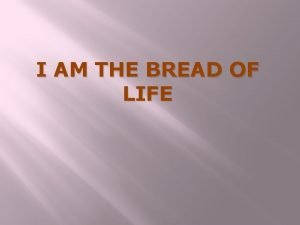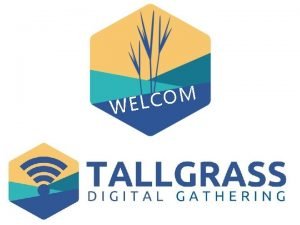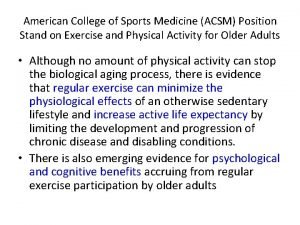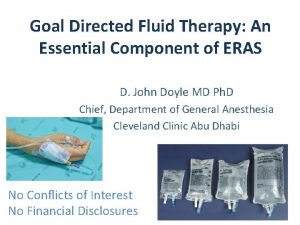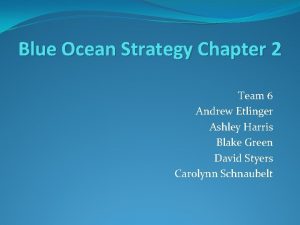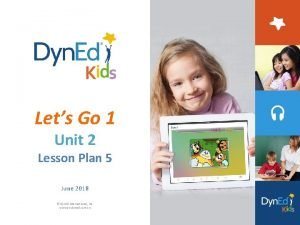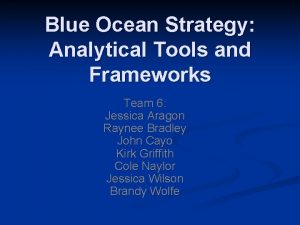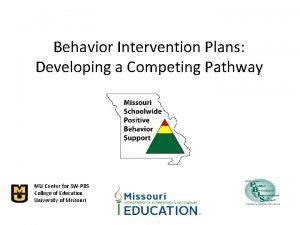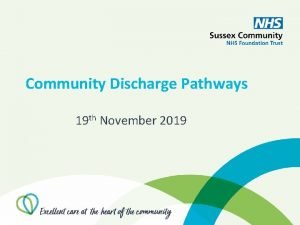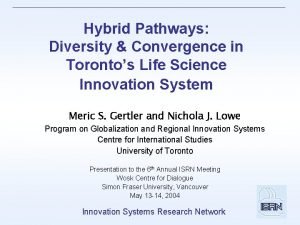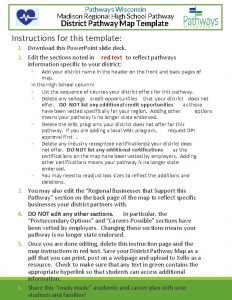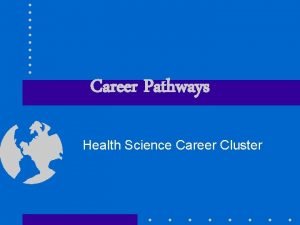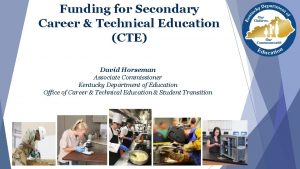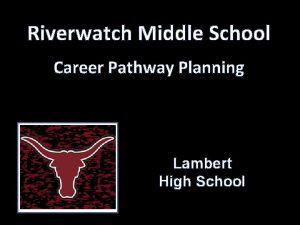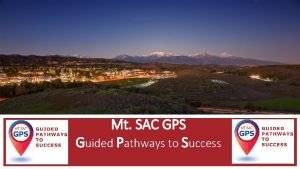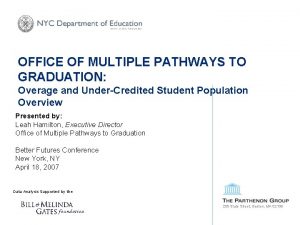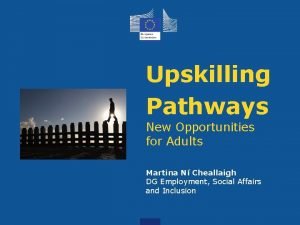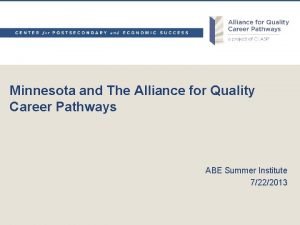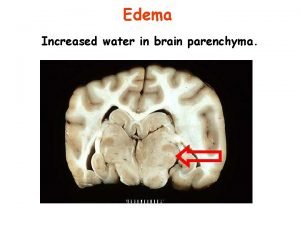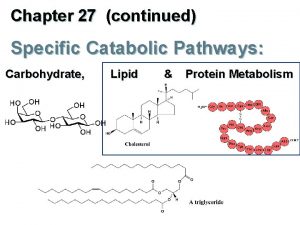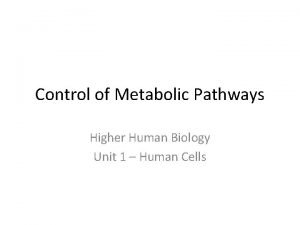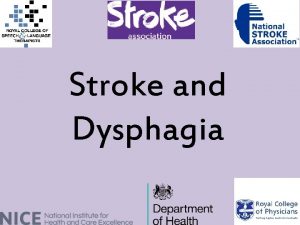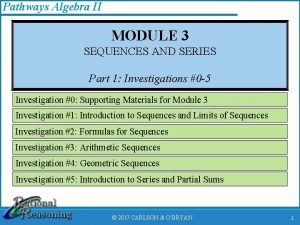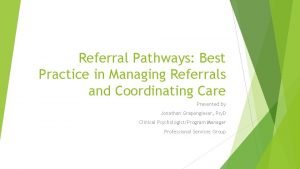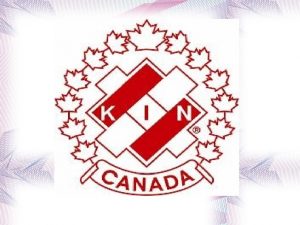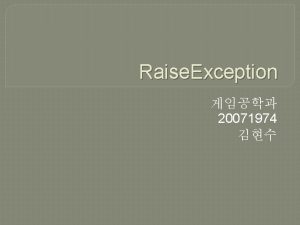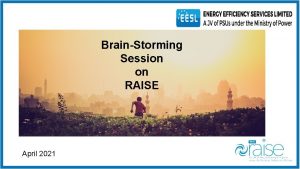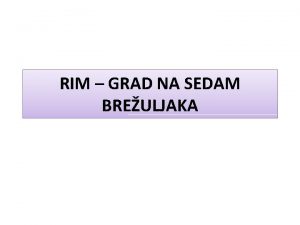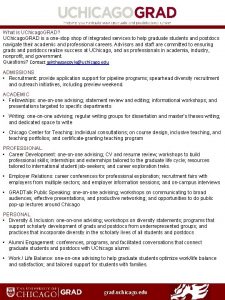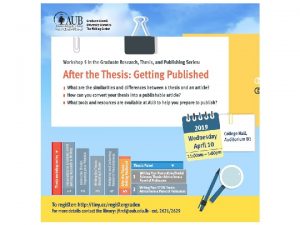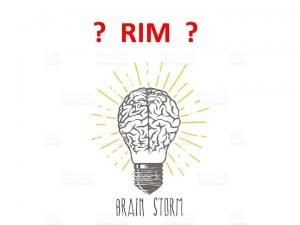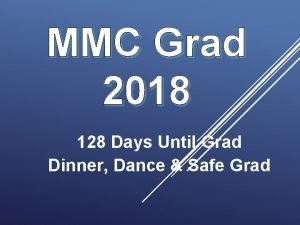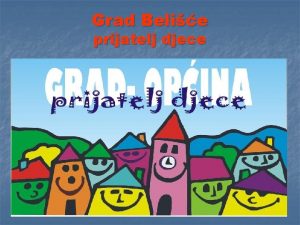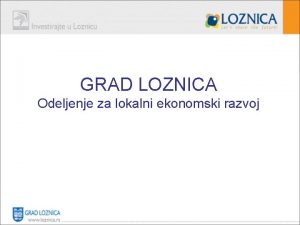Grad Pathways What is Raise DC Grad Pathways

































































- Slides: 65

#Grad. Pathways

What is Raise DC? #Grad. Pathways

Statewide Four-year Grad Rates 72% 70% 68% 66% 64% 69% ? 2015 -2016 -2017 62% 60% 65% 58% 56% 61% 62% 61% 59% 54% 52% 2010 -2011 -2012 -2013 -2014 -2015 #Grad. Pathways

#Grad. Pathways

What is Raise DC’s Graduation Pathways Project? • Driven by a shared vision that every student – no matter how far off track he or she may be – has a path to graduation • Spur and sustain citywide action: 1. Fortify transitions from 8 th through 9 th grades 2. Expand access to timely credit recovery options for off-track students 3. Design and expand the supply of educational options for offtrack students and students who have dropped out 4. Advance a “no wrong door” infrastructure to ease challenges for older students to identify, reconnect, and re-enroll in educational options #Grad. Pathways

Goals of our Annual Summits Provide a yearly unification moment for schools, education leaders, and other critical stakeholders: 1. Share progress on citywide efforts to improve high school graduation rate 2. Disseminate new research and data to drive individual and collective efforts 3. Lift up/define effective strategies and policies to build stronger pathways to graduation for specific groups of off-track students #Grad. Pathways

Who is in the Room Today? Postsecondary Institution Business Foundation Other Government Agency School (Middle, High, Alt/Adult) Nonprofit/ Community-Based Organization #Grad. Pathways

Today’s Agenda 9: 15 a. m. Nationwide insights panel 10: 00 a. m. Break/transition 10: 15 a. m. Workshops 12: 00 p. m. Break/transition 12: 15 p. m. 1: 15 p. m. Lunch, Education Executive panel Workshop report-outs 1: 45 p. m. Closing remarks #Grad. Pathways

#Grad. Pathways

Aviva Katz Denver, Colorado aviva_katz@dpsk 12. org #Grad. Pathways

8 TH-9 TH GRADE TRANSITIONS November 2017

Denver Public Schools: District Context • 92, 331 students (Oct. 2016) • 207 schools (112 secondary) • 67. 3% Free/Reduced Lunch • 36. 8% English Language Learners • 2016 -17: 6, 848 8 th graders 12

Core Elements & Timeline of 8 th-9 th Grade Transitions Work • Data (Feb. -March) • Preparation with School Staff (March) • Transitions Day (April) • High School Implementation (April-Dec. ) 13

8 th-9 th Grade Data: “ABC Stoplight Plus” • ABC Stoplight Report • Middle School Math/English Grades, Attendance, Suspensions • Academic Risk Index Data • Education, Confidence, Connections, Stress, Well-Being, Motivation • Middle School Staff Input • Personal/Social Risk Factor, Notes • Interests & Concerns • Sports/Clubs, HS Concerns, Career Interests 14

Preparation for Transitions Day with School Staff • Preparation meetings with middle & high school counselors • Middle School: • Data input needed, Transitions Day logistics • High School: • How to use the data, Transitions Day logistics 15

Transitions Day • Kickoff session & data overview • Speed sharing/Resource Fair • Student Support Practices (schools share) & school planning time 16

High School Implementation • High schools use data to: • Schedule academic courses • Plan supports for specific students • <90% attendance, 3+ suspensions, Academic Risk Index • Plan for student engagement • Sports, clubs, career interests, counselor meetings • Plan for summer home visits 17

Measures of Success • Transitions Day participant survey • 95% say that speedsharing is valuable • District graduation rate • District dropout rate • 9 th grade on-track rate 18

Graduation, Completion, Dropout, On-Track Data School Year 9 th Grade On Track Completion Graduation Dropout 2016 -17 61% 2015 -16 60. 50% 69. 10% 67. 20% 4. 00% 2014 -15 57. 10% 66. 90% 64. 80% 4. 60% 2013 -14 54% 67% 62. 80% 4. 48% 2012 -13 53. 10% 65. 30% 61. 30% 4. 97% 2011 -12 62. 80% 58. 80% 5. 70% 19

Developing Work • Strengthening high school implementation • 5 th-6 th Grade Transitions • Special Education Transitions Day 20

Sheila Henry Austin, Texas sheila. henry@austinisd. org #Grad. Pathways

L O O H C S H G IMPROVING HI A H G U O R H T OUTCOMES S N E L Y T I U Q E RACIAL L A SHEILA L. HENRY, PRINCIP L O O H C S H IG H E G E L L O C Y L LYNDON B. JOHNSON EAR

PROBLEM STATEMENT On our campus, economically disadvantaged students did not have a wide range of opportunities or access to multiple outlets and necessary supports to ensure that they graduated with their cohorts college, career, and work ready.

WHO WE ARE…… • • 798 Students • Female: 363 • Male: 435 • Economically • Disadvantaged: 592 • African American: 300 • Hispanic: 472 • Other: 26 15. 4% Special Needs 24. 44% ELL 9. 15% Gifted/Talented 25% Enrolled in Early College High School

OUR CHALLENGES • Underrepresented Students • Achievement/ Opportunity Gap • Equity at the Campus Level • Resource Allocations • Mobility Rates • Language Barriers • Support Services • Building and Sustaining Relationships • Credit Recovery/On. Track to Graduate • Disconnected Instructional Practices • Professional Development Opportunities

OUR FINDINGS……. . When looking through equity lens, we found that there were fewer opportunities for our economically disadvantaged students to graduate college, career, and work ready.

OUR FINDINGS……. . • • We were not equipped to support students passing the Texas Success Initiative (TSI); necessary assessment for students to pass in order to qualify them for the college courses. Our sequencing of Career Technology Education (CTE) courses were not leading to career, jobs, or work experiences for our students.

OUR FINDINGS……. . • We did not have the necessary campus supports in place to for students when they struggled with academics and/or unforeseen circumstances outside of school. • We were not intentional about the right work that students needed to accomplish.

OUR FINDINGS……. . • We were not offering specific Professional Development opportunities for teachers to support their content and ability to connect, relate, and teach students in a way that was different from the way they were taught. • We were not adhering to the culture, customs, and rituals of a 40 -year-old building that history and ties to the community.

OUR STRATEGIES Adopting a Common Instructional Framework Establishing Consistency with Instructional Practices Creating Family Resource Center Ensuring Therapeutic/Mental Health Services Providing Consistent Professional Development for Teachers Embracing Early College High School (ECHS) Expanding ECHS for Our Career Launch Promoting My Brother’s Keeper Offering Multiple CTE Pathways and Course Offerings with Articulated Credits and Occupational Certifications Providing Boys and Girls Club Making Twilight and Jumpstart Available

SYSTEMS IN PLACE • Flexible scheduling • One-to-one technology • Tier I campus-wide instruction via use of Marzano’s Art and Science of Teaching (Common Language of Instruction) • Tracking attendance weekly and making contact with families on a daily basis • My Brother’s Keeper initiative – allows us to target our 9 th grade students with a history of attendance issues serve as mentors for those students by building and sustaining those relationships necessary for success.

SYSTEMS IN PLACE CONT’D • Hiring support staff for our students who have learning and language gaps to ensure supports are in place • Intentional hiring of personnel who are able to connect with our student population and are a good fit for our campus • Focus on equity practices when it comes to students with disabilities and those who are economically disadvantaged, regardless of ethnicity

POLICIES/PRACTICES Austin Independent is a District of Innovation: • The campus has acquired additional professional development days for teachers to design and create meaningful lessons for students to connect with. • Providing resources for families through our Family Resource Center to take care of basic needs • Partnering with Austin Community College as our higher education partner for our ECHS students • Hiring of a Graduation to support graduates and their families

POLICIES/PRACTICES CONT’D • Mentoring programs – such as My Brother’s Keeper – to mentor and support our students • Hiring of a Behavior Mental Health Coordinator to support our students who struggle with mental health issues • Providing internships and job shadowing for students • Project Help to support our families who are homeless

POLICIES/PRACTICES CONT’D • Actively seeking out first generation college goers • Issuance of Occupational Certifications • Being culturally responsive to the needs of our students • Aligning of vertical team resources and professional development • Honoring campus traditions and rituals

HISTORICAL GRADUATION DATA School Year 2011 -2012 -2013 -2014 -2015 -2016 All Students 78. 2% 85. 9% 88. 9% 92. 1% African American 86. 5% 88. 3% 82. 9% 93. 9% 98. 7% Hispanic 72. 5% 83. 3% 88. 9% 83. 8% 86. 2%

Kathy Hamilton Boston, Massachusetts kathy. hamilton@bostonpic. org #Grad. Pathways

Long Game: Moving the Needle for Opportunity Youth Raise DC Graduation Pathways Summit November 6, 2017

Boston’s Key Strategies for Moving the Needle • Elevated visibility of the issue • Inspiration/creating a buzz • High leverage activities • Engaging champions and stakeholders • Reflection/self-assessment

YTTF Starting the Wave

High Leverage Activities at the YTTF Level • YTTF publishes Too Big To Be Seen MAY 2006 • PIC and YTTF pilot outreach to dropouts 2006 • Multiple public forums on early indicators, compulsory age of attendance, and suspension with community partners APRIL 2008 - APRIL 2009

YTTF Recommendations: A Common Agenda 1. Refine dropout data collection methods and deepen the analysis. 2. Develop early intervention strategies and an outreach and referral system. 3. Increase the number and variety of alternatives. 4. Create school climates that are welcoming and respectful for students and parents. 5. Increase coordination among agencies to close gaps. 6. Develop revenue strategies for alternative programs, early intervention, and outreach to dropout.

Flow of Impact: School District

High Leverage Activities at the Practice Level • YTTF presents recommendations to BPS superintendent APRIL 2007 • BPS hires Parthenon for segmentation study JANUARY 2007 • Online credit recovery piloted JULY 2007 • BPS superintendent makes graduation a priority JANUARY 2008 • Re-Engagement Center opens JULY 2009 • Dropout rates reach historic lows in Boston JANUARY 2015

Flow of Impact: Increased Visibility at the City and Community Level

High Leverage Activities at the City and Community Level • Mayor Menino convenes YTTF OCTOBER 2004 • Boston Globe endorses dropout outreach MARCH 2007 • City Year corps members engage at-risk students SEPTEMBER 2008 • WGBH and WBUR launch Project Dropout FEBRUARY 2009 • Mayoral candidate forum on youth issues AUGUST 2013

Flow of Impact: State Level

Flow of Impact to Opportunity Youth

Waves Creating Boston’s OYC

High Leverage Activities at the OYC Level • Organizing grant proposal MAY 2013 • Open Connection Center for disconnected high school grads FEBRUARY 2015 • Mayoral launch of Connection Center JULY 2015 • Dismantling the School to Prison Pipeline forum JUNE 2016

Young People Making Initial Engagement and Placed in BPS through REC since Opening Making initial engagement Re-enrolled in BPS 1000 861 900 863 774 762 800 700 610 600 550 477 500 400 292 300 200 100 0 725 208 309 248 307 451 443 409 327 303 141 72 2006 -07 2007 -08 2008 -09 2009 -10 2010 -11 2011 -12 2012 -13 2013 -14 2014 -15 2015 -16

Boston Public Schools Dropout Totals, 2006 -2015 Source: Boston Public Schools, Massachusetts Department of Elementary and Secondary Education

Boston Public Schools 4 -year & 5 -year Graduation Rates, 2006 -2015 Chart Title 4 -year 5 -year 75% 70. 9% 72. 3% 72. 2% 73. 1% 70. 7% Graduation Rate 68. 8% 65. 1% 65. 4% 66. 5% 63. 2% 60% 59. 1% 55% 50% 2006 59. 9% 64. 4% 65. 9% 2012 2013 66. 7% 61. 4% 57. 9% 2007 2008 2009 Source: Boston Public Schools 2010 2011 Cohort Year 2014 2015

Trends in the 16 -Month College Enrollment Rates of BPS Classes of 2006 -2014 100% 90% 80% 70% 61. 2% 64. 3% 60% 59. 9% 62. 9% 67. 1% 66. 2% 64. 7% 2010 2011 2012 71. 5% 71. 6% 2013 2014 50% 40% 30% 20% 10% 0% 2006 2007 2008 2009 Source: Massachusetts Department of Elementary and Secondary Education

College Completion Rates of BPS Graduating Classes, 2000 -2009 Percent of First-Year Enrollees and All H. S. Graduates % of First Year Enrollees % of H. S. Graduates 60% 50% 40% 30% 46. 8% 47. 1% 49. 3% 50. 2% 48. 1% 34. 8% 33. 0% Class of 2007 Class of 2008 40. 6% 24. 7% 29. 2% 31. 7% 32. 5% Class of 2005 Class of 2006 51. 3% 36. 5% 20% 10% 0% Class of 2000 Class of 2003 Note: College completers include postsecondary certificates and degree earners Class of 2009

Trends in the BPS Graduates Earning a Postsecondary Credential Within Six Years of High School Graduation # of College Completers 1400 1200 1000 883 966 1045 1, 143 1, 314 1, 166 735 600 400 200 0 Class of Class of 2000 2003 2005 2006 2007 2008 2009 (N = 2, 967) (N = 3, 025) (N = 3, 045) (N = 3, 214) (N = 3, 282) (N = 3, 534) (N = 3, 597)

Morning Workshops Workshop A: Building bridges from middle to high school Workshop B: Expanding access to credit recovery Workshop C: Reimagining high school graduation requirements #Grad. Pathways

#Grad. Pathways

#Grad. Pathways

#Grad. Pathways

Session A: Building bridges from middle to high school Core themes: • Create a way for students and families to have a voice inside the data being shared through the transition and Kid Talk process • “Is this too much? ” Scaling and capacity – Is this too much info for any LEA or person to prepare and also to digest? Filtering for necessary & relevant info needed for Kid Talk • This should be conversation happening on a continuum – info should be collated from various sources starting at kid’s first entry point Opportunities/next steps: • Create system to capture what folks are already doing around supporting 8 th- to-9 th grade transitions and use as a model to support LEAs thinking of starting up similar process • Create system that standardizes info being shared about students across the board in DC • Work with LEAs to figure out how to get involved in the Kid Talk, data sharing, and who should be the person most appropriate to spearhead the info sharing #Grad. Pathways

Session B: Expanding access to credit recovery Core themes: • Data transparency • SYEP partnership • Flexibility regarding resource sharing, ensuring safety at “Hub” location Opportunities/next steps: • Segmentation analysis • Provider fair to learn about credit recovery options; understand who is doing what, and how #Grad. Pathways

Session C: Reimagining high school graduation requirements Core themes: • Students need single set of graduation requirements w/ enough flexibility to prepare them for college and/or career – and offer students options • Students who transfer across LEAs encounter unique challenges (e. g. credits that don’t transfer) that need to be kept in forefront • Need to better define 21 st century jobs, the pathways to prepare students for them, and appropriate integration of technology Opportunities/next steps: • Task Force should look at graduation requirements across the region and nationally • Reevaluate order of required classes along middle school-to-high school continuum (e. g. DC History could be middle school course) • Further define community service to make it meaningful; think about role of paid work, service learning, and other prior experiences #Grad. Pathways

#Grad. Pathways

#Grad. Pathways
 I lift my eyes to the hills
I lift my eyes to the hills What is syntactic awareness
What is syntactic awareness Chipstenoso
Chipstenoso Is it time to raise pay achieve 3000 answers
Is it time to raise pay achieve 3000 answers Raise a hallelujah
Raise a hallelujah How does welfare attempt to raise poor
How does welfare attempt to raise poor Is juicer a simple machine
Is juicer a simple machine Hand signal charts for cranes
Hand signal charts for cranes Zoom raise hand
Zoom raise hand Undernourished parents often raise
Undernourished parents often raise Exrx face pull
Exrx face pull Acsm position stand
Acsm position stand Passive leg raise blood pressure
Passive leg raise blood pressure Raise your right hand and repeat after me
Raise your right hand and repeat after me How to raise a monomial to a power
How to raise a monomial to a power How did cafod start
How did cafod start I sing a hallelujah in the presence of my enemies
I sing a hallelujah in the presence of my enemies Raise your hand teams
Raise your hand teams A crane is used to raise one end of a 15 kn girder
A crane is used to raise one end of a 15 kn girder _____ muscles run across the cheek.
_____ muscles run across the cheek. Ddrfff
Ddrfff Ncdsmo
Ncdsmo Four action framework example
Four action framework example Blue ocean eliminate-reduce-raise-create grid
Blue ocean eliminate-reduce-raise-create grid Raise your hand
Raise your hand Raise the problem
Raise the problem Monica ali
Monica ali Luke 5 17 26
Luke 5 17 26 Risen verb form
Risen verb form Raise and rise again until lambs become lions
Raise and rise again until lambs become lions Ethical and social issues in the digital firm
Ethical and social issues in the digital firm Raise your love
Raise your love Rounding 4 or less let it rest
Rounding 4 or less let it rest Eliminate reduce raise create grid
Eliminate reduce raise create grid Victorian eal curriculum
Victorian eal curriculum Pathways pediatric therapy
Pathways pediatric therapy Key impact pathways horizon europe
Key impact pathways horizon europe Somatic motor pathway
Somatic motor pathway Problem behavior pathway example
Problem behavior pathway example 5 healthcare pathways
5 healthcare pathways Discharge pathways
Discharge pathways Descending motor pathways
Descending motor pathways Hybrid pathways
Hybrid pathways Pathways madison wi
Pathways madison wi Therapeutic services pathway
Therapeutic services pathway Jctc jessamine county
Jctc jessamine county Lambert high school pathways
Lambert high school pathways Mt sac guided pathways
Mt sac guided pathways Pathways to graduation
Pathways to graduation Upskilling pathways
Upskilling pathways Quality career pathways
Quality career pathways Brain parenchyma
Brain parenchyma Catabolic pathways
Catabolic pathways Girfec triangle
Girfec triangle The pathways to new ventures for entrepreneurs
The pathways to new ventures for entrepreneurs Thank you diversity
Thank you diversity Higher biology unit 2
Higher biology unit 2 Higher human biology metabolic pathways
Higher human biology metabolic pathways Wisconsin career pathways
Wisconsin career pathways Cerebellar pathways
Cerebellar pathways Pathways of weathering
Pathways of weathering Stroke pathway nice
Stroke pathway nice Pathways algebra 2 answer key
Pathways algebra 2 answer key Referral pathways
Referral pathways Sa node on ecg
Sa node on ecg Sas curriculum pathways
Sas curriculum pathways


